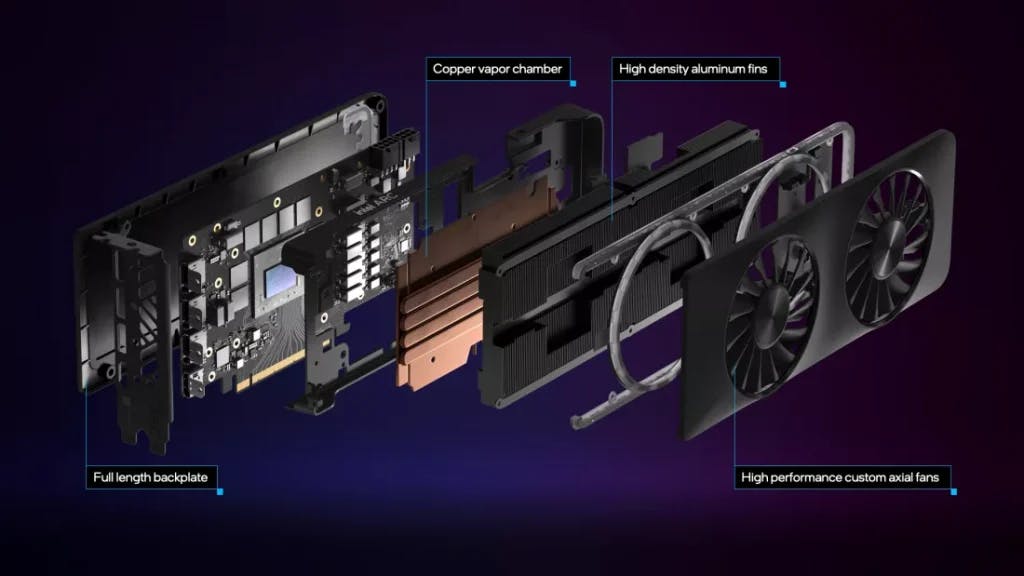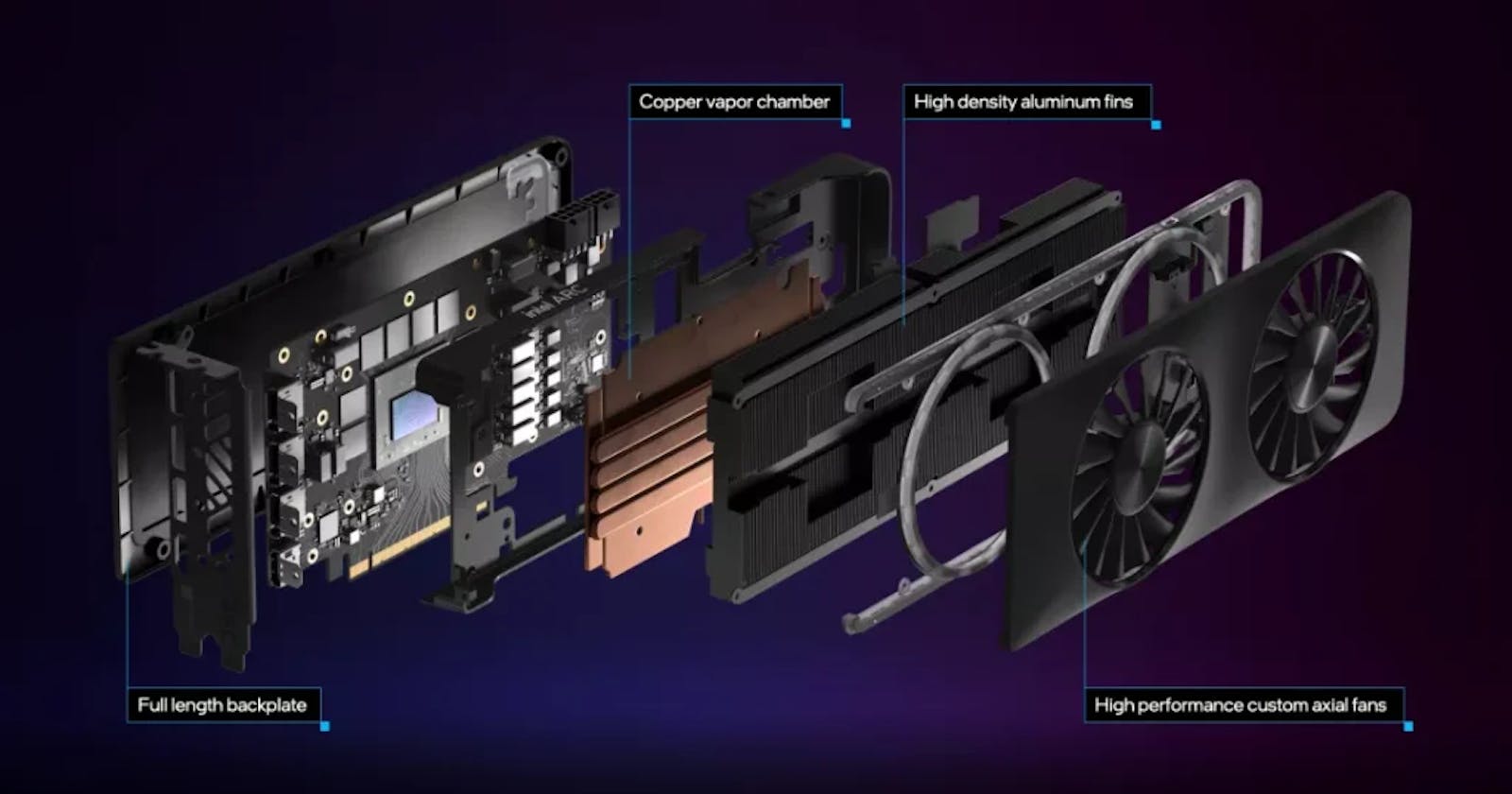For another discussion about upcoming Arc Alchemist GPUs, veteran engineer Tom Petersen visited Intel marketing Ryan Shrout in the lab.
This time, they focused on the limited edition Arc A750 and Arc A770 cards’ cooling capabilities and overclocking potential.
To put things in perspective, the Limited Edition cards are basically Intel’s Founder’s Edition cards; they are neither unique nor limited.
Shrout highlighted that they would be easily accessible and in huge quantities right away.
The question is, will you want one?
It sounds like Intel did a decent job for their first attempt at producing a graphics card.
In this video, Shrout & Petersen primarily discuss the A750 Limited Edition, however, it appears that the A770 Special Edition also has a comparable PCB and cooler.
The cooler itself is made out of a dense arrangement of aluminium fins, two fans, and a sizable copper vapour chamber.
Four flat 10 x 3 mm pipes that run laterally across the card are supplied by the vapour chamber, which comes in contact with the GPU, GDDR6, and VRMs.

Intel overclocks Arc A750 with factory air cooler to 2.7 GHz.[image credit: to the respected owners]
Eight GDDR6 modules surround the GPU, and the PCB features 8-pin & 6-pin plugs that go into six VRMs towards the right of them. The output is provided by three DisplayPort 2.0 connections and one HDMI 2.1 port.
According to Petersen, the board was made with sufficient cooling that enables overclocking. He starts up an A750-equipped computer to demonstrate his point & attempts to overclock it with the Arc Control programme.
For u : Intel Demonstrates 80Gbps Thunderbolt, Matching USB4 2.0 Performance
Petersen’s overclocking strategy isn’t the finest, though. He begins by adjusting the mysteriously and ridiculously called “performance boost” slider, & when doing so stopped changing the clock speed, he increased the power limit all the way to the top, 228 W.
The voltage offset was then gradually increased, and when the GPU reached 2700 MHz at a 50 mV offset, he declared himself finished.
There are no temperature or stress tests. There is no guidance on how to change the settings again after going too far and crashing the system.
Petersen actually overclocked Hitman 3 while it was running in the background, so that serves as a kind of stability test. He measured the overclocking’s performance boost using the game.
The GPU reached 90 frames per second when operating at 2400 MHz on normal settings. It managed to reach 96 frames per second at 2719 MHz, an increase in speed of over 7% made possible by a 13% overclock.
Actually, it’s a little weird that the A750 was operating at 2400 MHz in the first place. Its game clock, which is the only speed mentioned on the spec sheet by Intel, is 2050 MHz. 2400 MHz is just a 17% overclock & 2719 MHz is a 33% overclock in comparison.
The elephant in the room—price and availability—is ultimately addressed by Shrout and Petersen at the conclusion of the video. They only say this: “We are aware of your eagerness to do it. We can’t wait to share it with you; it will happen very soon.”
